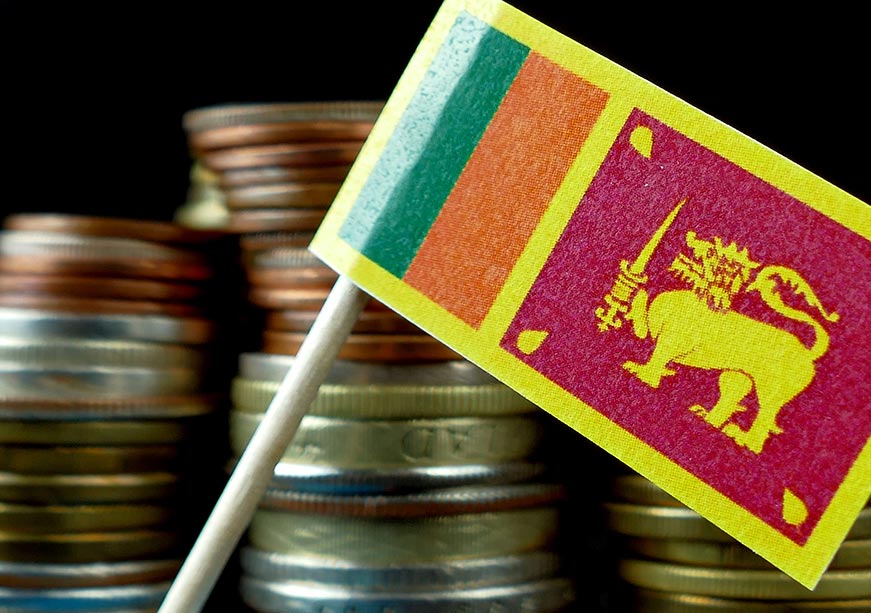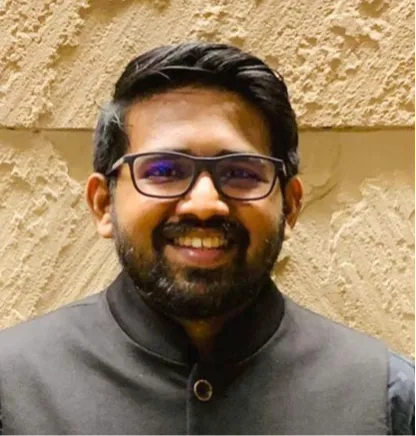-
CENTRES
Progammes & Centres
Location
This Sri Lankan election, shaped by the aftermath of the 2022 economic crisis and the Aragalaya uprising, is marked by a shift in public focus towards economic recovery

Image Source: Getty
The 2024 Sri Lankan presidential election, scheduled for 21st September, arrives at a critical juncture in the country's political and economic history. As Sri Lanka struggles with the aftermath of an economic and political crisis, traditional election narratives of nationalism and ethnic division are losing their currency. Instead, economic recovery has taken centre stage, marking a significant departure from the past. The four leading candidates are proposing a range of populist policies aimed at addressing economic difficulties. While these promises have garnered a variety of expectations amongst the public, Sri Lanka has a history of leaders failing to deliver on their promises. But with high public distrust, the stake for the reforms, or the lack of it, is enormous for the country.
Analysing the outcomes of previous elections helps illuminate the evolving priorities of the Sri Lankan electorate. Past elections, particularly in 2010, 2015, and 2019, were dominated by concerns over national security (see Table 1). Examining these trends not only highlights the shifts in voter sentiment but also demonstrates how successive governments have repeatedly failed to address the public's needs, deepening the distrust between them and the electorate. This history of unmet promises has led to the current demands for change and why the potential for unrest, both during and after the election, is so high.
Table 1. Previous elections and results
| Election Year | Candidate | Party/Coalition | Votes Received | Percentage of Votes | Result |
| 2010 | Mahinda Rajapaksa | United People's Freedom Alliance (UPFA) | 6,015,934 | 57.88% | Re-elected President |
| General Sarath Fonseka | New Democratic Front (NDF) | 4,173,185 | 40.15% | Defeated | |
| 2015 | Maithripala Sirisena | United National Front (UNF) | 6,217,162 | 51.28% | Elected President |
| Mahinda Rajapaksa | United People's Freedom Alliance (UPFA) | 5,768,090 | 47.58% | Defeated | |
| 2019 | Gotabaya Rajapaksa | Sri Lanka Podujana Peramuna (SLPP) | 6,924,255 | 52.25% | Elected President |
| Sajith Premadasa | Samagi Jana Balawegaya (SJB) | 5,564,239 | 41.99% | Defeated |
Source: Authors’ compilation
The 2010 elections—the first after the end of the three-decade civil war—were heavily influenced by Mahinda Rajapaksa’s military victory over the LTTE in 2009. Mahinda tapped on nationalist and Sinhalese-Buddhist sentiments, portraying himself as a war hero and protector of the country, securing a landslide victory in the 2010 election. This was coupled with his initiatives to boost post-economic growth through substantial borrowing and infrastructure development. However, Rajapaksa's victory also marked the start of his increasingly authoritarian rule, widely criticised for consolidating power and entrenching his family's dominance in Sri Lankan politics.
In 2015, Maithripala Sirisena, a senior minister in Rajapaksa's government, defected to challenge the Rajapaksas. He won the presidency on promises to reduce the concentration of power and address corruption and nepotism—issues that had grown during Rajapaksa's increasingly authoritarian rule. Sirisena’s campaign framed the election as a stark choice between continued authoritarianism and a democratic administration. A sense of ensuring security in the country persisted, especially by promoting the reconciliation of the Tamil minorities. While Sirisena initially made some progress, such as reducing presidential powers through the 19th Amendment, his presidency eventually faltered. His failure to prevent the Easter attacks in 2019 became a major point of criticism from the Opposition, contributing to his defeat in that year’s election.
While Sirisena initially made some progress, such as reducing presidential powers through the 19th Amendment, his presidency eventually faltered.
The Rajapaksa family regained power in the 2019 presidential election, with Gotabaya Rajapaksa's campaign centering on the same national security sentiment from 2010, particularly in the aftermath of the Easter bombings. However, tax cuts, debt maturities, unresolved structural economic issues, the COVID-19 pandemic, economic misgovernance, and the Russia-Ukraine War triggered an economic crisis in the country. By 2022, these factors resulted in severe inflation, shortages of essential goods, and Sri Lanka’s first-ever debt default, fueling widespread public anger. The public reaction culminated in the Aragalaya movement, where the demands for economic recovery and political reform drove protests. It saw significant youth participation, who were particularly disillusioned with the status quo. The movement represented a rare moment of unity across ethnic and social lines, as protesters from various ethnic and social backgrounds united to demand change. The sustained pressure from the protests ultimately led to Rajapaksa fleeing the country and resigning in July 2022, marking a significant shift in Sri Lanka's political landscape.
It is in this regard the 2024 elections are unique. It is the first election that has followed people's demand for mass reforms. As a result, it is set to be markedly different and far more unpredictable. The traditional narratives that have defined past elections—such as security, nationalism, and ethnic divides—have failed to hold the same currency. The public's needs and demands have motivated politicians to look beyond these issues and debate the country's economy and the way ahead. Yet, once elected, all leaders are bound to certain conditions from the International Monetary Fund (IMF).
For instance, Ranil Wickremesinghe has framed his campaign around economic recovery by promising continuity of his policies, especially through deepening the IMF agreement, emphasising austerity measures such as tax hikes and spending cuts. His policies also include divesting state-owned enterprises by selling shares of state banks to public and private investors to stabilise finances and reduce government liabilities. While his measures have doubled poverty and increased inequality in the country, he has promised to revise the tax slabs. However, his privatisation efforts have sparked protests, particularly from public sector unions and the Janatha Vimukthi Peramuna (JVP), led by Anura Kumara Dissanayake, who argue that the policies will result in job losses and exacerbate unemployment.
Ranil Wickremesinghe has framed his campaign around economic recovery by promising continuity of his policies, especially through deepening the IMF agreement, emphasising austerity measures such as tax hikes and spending cuts.
Dissanayake and the JVP offer a more radical alternative in the upcoming polls, advocating for the reversal of privatisation efforts and aiming to retain public control over key industries. His economic approach emphasises import substitution to reduce dependence on foreign goods and strengthen local industries, contrasting with Wickremesinghe's export-driven model. Additionally, Dissanayake's platform focuses on reducing inequality by expanding social welfare programmes, increasing taxes on the wealthy, and easing austerity measures to support lower-income families. As a result, he has promised to renegotiate the IMF programme to protect the poor, explore efficient taxing and expenditure proposals, conduct debt audits and create an alternative debt sustainability analysis. However, his lack of governing experience, ambitious budget proposals, and inward economic outlook raise concerns about their viability and implications.
Sajith Premadasa, another major contestant, is focusing on industrial development, job creation, and social equity, positioning himself as a centrist reformist. He has criticised the IMF agreement for prioritising short-term fiscal stability over long-term, sustainable growth. His economic model, which he calls a “Social Democratic Market Economy,” seeks to balance market-driven development with strong social safety nets, reflecting his goal of growth with equity. He has promised to continue with IMF reforms while offering welfare schemes and tax reforms. Premadasa also advocates for public-private partnerships rather than full privatisation of state-owned enterprises, aiming to retain strategic control while promoting efficiency. His appeal to middle and lower-income families, combined with his sympathy toward the Tamil faction, pushes him as a candidate focused on addressing long-standing inequalities and promoting inclusive development.
Premadasa also advocates for public-private partnerships rather than full privatisation of state-owned enterprises, aiming to retain strategic control while promoting efficiency.
On the other hand, Namal Rajapaksa, leveraging the legacy of his family's political dominance, emphasises economic nationalism and the protection of state-owned enterprises. He calls for renegotiating the IMF deal under the pretext of preserving national interests and traditional values. However, his close association with the policies that contributed to Sri Lanka's economic collapse could hinder his efforts to distance himself from these failures, despite his promises of rural development and economic recovery.
This election, shaped by the aftermath of the 2022 economic crisis and the Aragalaya uprising, is marked by a shift in public focus towards economic recovery. It follows a period of intense political upheaval and public dissatisfaction with the political establishment. This has set the stage for an election where the electorate's trust in traditional political figures is at an all-time low, and where the potential for post-election unrest remains high if their expectations are not met. Despite the strong focus on economic recovery, Sri Lanka has a history of political elites failing to deliver on promises. While all main candidates have each proposed distinct solutions, implementing these reforms will be a challenging task, especially given the stringent conditions from the IMF, particularly around austerity and fiscal discipline.
Aditya Gowdara Shivamurthy is an Associate Fellow at the Observer Research Foundation
Ananya Gaur is a Research Intern at the Observer Research Foundation
The views expressed above belong to the author(s). ORF research and analyses now available on Telegram! Click here to access our curated content — blogs, longforms and interviews.

Aditya Gowdara Shivamurthy is an Associate Fellow with the Strategic Studies Programme’s Neighbourhood Studies Initiative. He focuses on strategic and security-related developments in the South Asian ...
Read More +